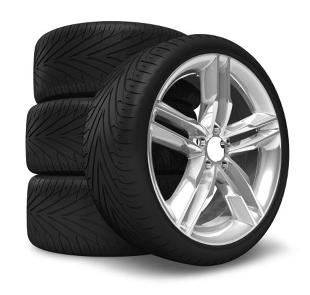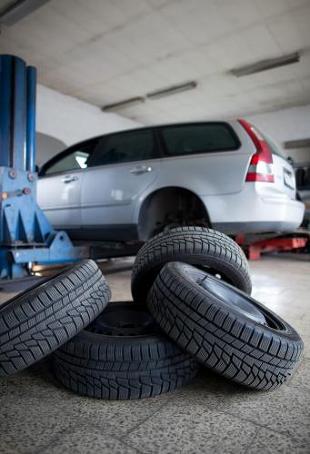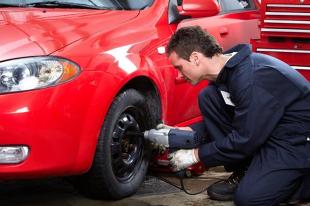
Take care of your tires
 Every second driver who goes on a trip has the wrong pressure in the tires of the car. This situation can be fatal. High summer temperatures, heavy luggage and high speed put a lot of stress on tires.
Every second driver who goes on a trip has the wrong pressure in the tires of the car. This situation can be fatal. High summer temperatures, heavy luggage and high speed put a lot of stress on tires.
 According to traffic accident statistics compiled by the German automobile club ADAC, in 2010 there were 143 tire failures in Germany alone (215% more than in previous years). In Germany alone, 6,8 accidents involving people were caused by tires in the same year. According to the German Federal Statistical Office, this figure is more than double the number of accidents caused by improper braking (1359 accidents).
According to traffic accident statistics compiled by the German automobile club ADAC, in 2010 there were 143 tire failures in Germany alone (215% more than in previous years). In Germany alone, 6,8 accidents involving people were caused by tires in the same year. According to the German Federal Statistical Office, this figure is more than double the number of accidents caused by improper braking (1359 accidents).
READ ALSO
All season or winter tires?
How to extend the life of a tire?
Test drives conducted by ADAC have confirmed that with a 1 bar reduction in front tire pressure, wet braking distances increase by 10%. In such a situation, it is also dangerous to move along the curve. If the pressure in all tires is 1 bar lower, the tire side drag forces are almost halved (55%). In such a situation, the driver may quickly lose control of the vehicle and the vehicle may skid and fall off the road. It is worth noting that when fully loaded, the risk is even greater.
 Too low tire pressure increases fuel consumption. With a lower pressure of 0,4 bar, the car consumes an average of 2% more fuel and tire wear increases by 30%. Eco-friendly fuel-saving tires are especially beneficial on long holiday trips and high gas prices. “Eco-friendly summer tires with low rolling resistance, such as the Nokian H and V for compact and medium-sized cars, or even high-performance tires with relatively low rolling resistance, such as the Nokian Z G2, save half a liter of fuel. fuel consumption per 100 kilometers,” comments Juha Pirhonen, head of design at Nokian Tires, “A 40% reduction in rolling resistance also means a 6% reduction in fuel consumption. This saves 40 euros on a typical mileage of 000 kilometers. As a result, the car also emits less CO300.”
Too low tire pressure increases fuel consumption. With a lower pressure of 0,4 bar, the car consumes an average of 2% more fuel and tire wear increases by 30%. Eco-friendly fuel-saving tires are especially beneficial on long holiday trips and high gas prices. “Eco-friendly summer tires with low rolling resistance, such as the Nokian H and V for compact and medium-sized cars, or even high-performance tires with relatively low rolling resistance, such as the Nokian Z G2, save half a liter of fuel. fuel consumption per 100 kilometers,” comments Juha Pirhonen, head of design at Nokian Tires, “A 40% reduction in rolling resistance also means a 6% reduction in fuel consumption. This saves 40 euros on a typical mileage of 000 kilometers. As a result, the car also emits less CO300.”
 Too low tire pressure causes a lot of deformation, which can even lead to a blown tire. Other causes of cracks can also be scratches, bulges or deformation of the profiles. Also, excessively high pressure reduces the level of safety, since the contact area of the tire with the road is smaller, which leads to less grip and wear of the tire only in its middle part.
Too low tire pressure causes a lot of deformation, which can even lead to a blown tire. Other causes of cracks can also be scratches, bulges or deformation of the profiles. Also, excessively high pressure reduces the level of safety, since the contact area of the tire with the road is smaller, which leads to less grip and wear of the tire only in its middle part.
Safety also depends on the tire tread. The driving safety indicator on the tires shows the depth of the groove on a scale of 8 to 2. The hydroplaning indicator with a drop of water warns of the danger of hydroplaning. When the tread height reaches four millimeters, the display disappears, thereby making it clear that the risk is serious. To eliminate the risk of aquaplaning and to maintain a sufficiently short braking distance on wet surfaces, the main grooves must be at least 4 millimeters deep.
The DSI tread depth indicator with a numerical groove depth indicator and the hydroplaning indicator with a water drop are Nokian Tires patented innovations. Chipped tread or uneven tire wear can damage shock absorbers and require replacement.
 READ ALSO
READ ALSO
What do tires not like?
Bridgestone wraps up 2011 Road Show
Remember that tire pressure should always be measured when the tires are cold. It should also be remembered that a higher pressure is necessary even at higher loads. The correct values are usually found on the fuel tank cap or in the owner's manual. The driver should check all parameters in advance, preferably a few days before the holiday, in order to be able to change tires if necessary.